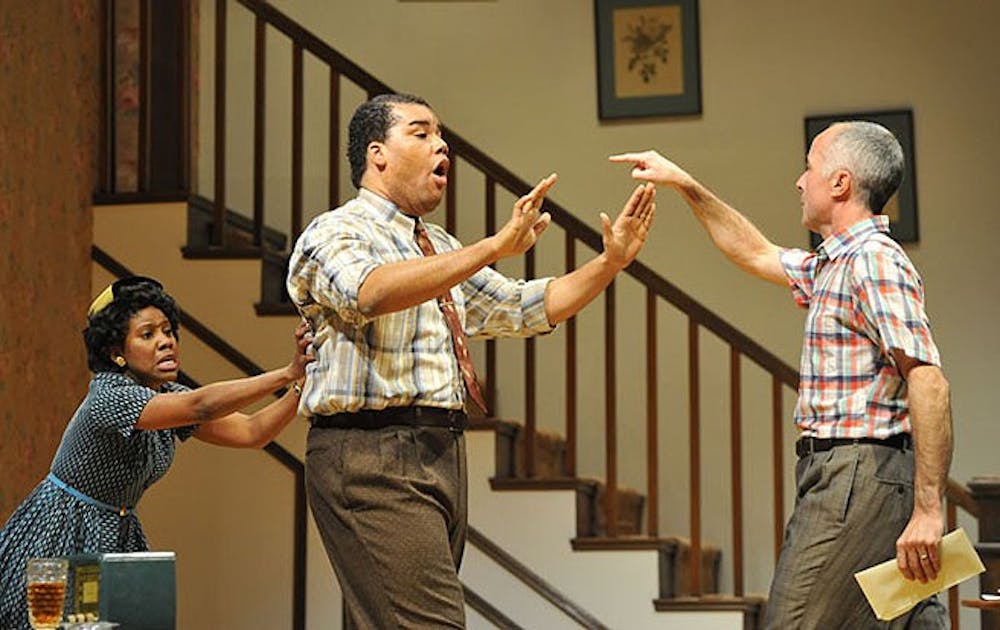In the wake of Duke’s own scandal about race, Bruce Norris’ Clybourne Park feels all too relevant as a played concerned with racial tension. Often considered a response to Lorraine Hansberry’s A Raisin in the Sun, the play picks up where Raisin left off. A 1950s white neighborhood is coping with—or not coping with—the imminent arrival of an African-American family. In Act II, the play fasts forward to what would be considered the present day; this time, a white couple is negotiating construction contracts with a black couple who represents the neighborhood’s homeowner association. Although the conversation is different, the racial conflicts are identical, commenting on the lack of progress even as eras change. What’s most surprising, perhaps, is that Clybourne Park is funny.
Clybourne Park leaves the audience simultaneously stunned and in hysterics, the laughter mostly stemming from discomfort and disbelief. In fact, a large portion of the dialogue in the second act consists solely of stereotype jokes and, were this a movie instead of a play, it would surely be rated ‘R’ for some of the language in this section alone. In fact, I heard the older man next to me whisper to his friend, “I hope there are no children here.” However, the extreme language emphasizes the current difficulties when it comes to discussing race. Though ultimately more accepting, Norris’ characters from the new millennium have a much harder time expressing their thoughts than the more overtly racist characters of the ’50s.
Although this play effectively communicates racial issues as told through seemingly unremarkable situations, Clybourne falls short. Perhaps its rotation with Raisin—a show that did not merely move the audience, but grab them and toss them about—made the impact of Clybourne Park underwhelming. But what ultimately stops this show from being a home run is something inherent; the characters are stereotypes. Yes, that is done to make a point, but something is lost when people are reduced to caricatures.
In Act II, the white woman onstage says, “half my friends are black” and “I dated a black man” to prove herself as colorblind. While at first I thought, yes, I know that type of woman, I later realized that I don’t—not actually, not in real life—know that person, nor do most people. Even reasonable and what feel like recognizable stereotypes are still just that: stereotypes. So while Clybourne is interesting and meaningful, it simply cannot say as much about reality; the characters are familiar, but not entirely relatable.
The staging also causes some problems. The fault does not lie with any one person, but the problem has to do with the sheer number of people on stage. Actors’ backs face the audience as they speak—and not just here and there, but consistently throughout the play. It would look unnatural to have the characters talk to each other in a semi-circle, but simply allowing actors to face upstage is not the solution.
Clybourne Park has an innovative structure and provides a unique commentary on a persisting issue, but it does not leave you with the incomparable high of a killer comedy nor with the gut-punching impact of a truly dramatic moment.
Get The Chronicle straight to your inbox
Signup for our weekly newsletter. Cancel at any time.

